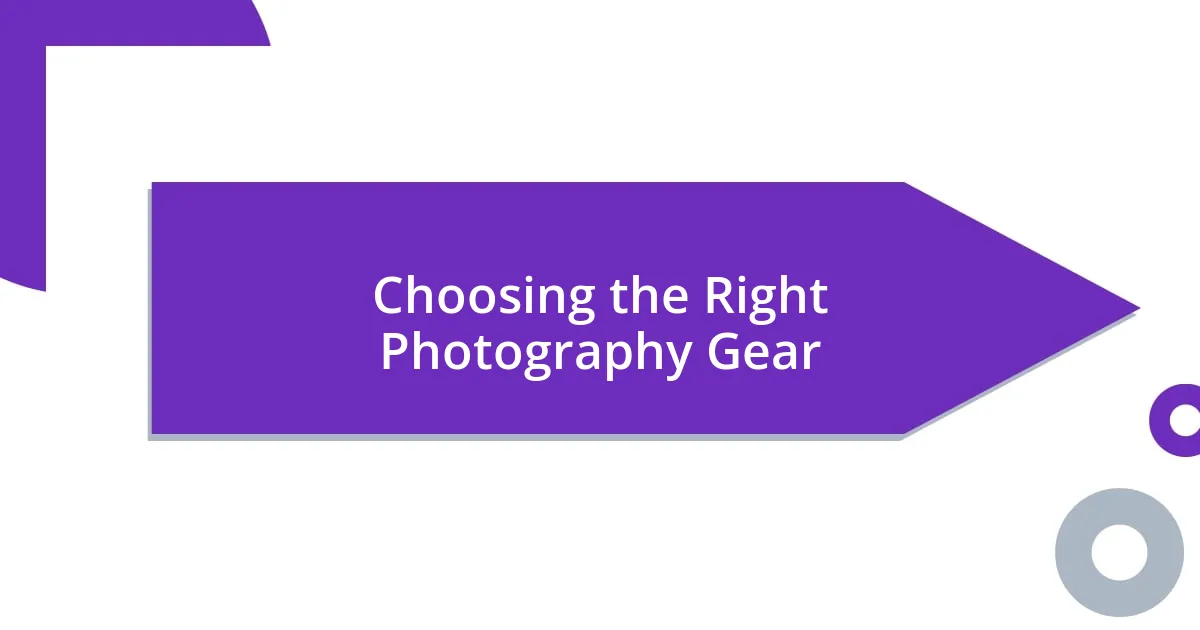Key takeaways:
- Street photography captures the essence of everyday life; observing surroundings, light, and composition is essential for impactful images.
- Choosing versatile and lightweight gear, like mirrorless cameras and prime lenses, enhances the street photography experience.
- Engagement with subjects through curiosity and friendly demeanor builds confidence and leads to genuine moments.
- Editing techniques, including strategic cropping and black-and-white conversion, can significantly elevate the emotional tone of street photos.

Understanding Street Photography Basics
Street photography is about capturing the essence of everyday life in an honest and compelling way. I remember my first outing; I was overwhelmed with the hustle and bustle around me. It’s fascinating how a fleeting moment can tell a story—like a child laughing in the park or an elderly couple sharing a quiet moment. Have you ever stopped to observe these seemingly mundane interactions? That’s where the magic happens.
To truly understand the basics, it’s essential to be aware of your surroundings. Finding the right light and framing your shot is crucial. I learned this the hard way during one of my early shoots when I snapped a gorgeous scene but failed to notice the harsh shadows ruining the details. It made me appreciate the importance of patience and observation; these elements can transform an ordinary moment into an extraordinary shot.
Composition is another key element in street photography. Whether it’s using the rule of thirds or playing with leading lines, the way you frame your subject can dramatically alter the impact of the image. I often challenge myself by trying different angles, making the ordinary feel extraordinary. What happens if you get low to the ground or shoot from above? The view can change everything, inviting viewers into a new perspective.

Choosing the Right Photography Gear
Choosing the right photography gear can initially feel overwhelming. I remember feeling a mix of excitement and anxiety when selecting my first camera; I wanted something light and versatile but also capable of capturing stunning images. I ultimately chose a mirrorless camera due to its compact size and excellent image quality, which allowed me to navigate busy streets without feeling burdened.
When considering your gear, it’s crucial to focus on a few key elements:
- Camera Type: Mirrorless or DSLR? I found mirrorless to be more convenient for street photography due to its lightweight design.
- Lens Options: A prime lens like a 35mm is great for street photography; it forces you to get closer to your subjects and creates a more intimate feel.
- Stability: A small tripod can be handy, but I often use a sturdy strap for stability when shooting without one.
- Versatility: Look for weather-sealed gear if you plan to shoot during different seasons; it’s saved my shots from unexpected rain.
- Accessories: Don’t forget extra batteries and memory cards; running out of power or space is one of the most frustrating experiences.
Taking these factors into account not only enhances your technical abilities but also enriches your overall experience—after all, capturing life in its candid moments should feel effortless and enjoyable.

Developing Your Eye for Composition
Developing your eye for composition in street photography is like training a muscle; it takes practice and a bit of experimentation. I vividly recall a day when I stumbled upon a striking image of a sunset reflecting off a glass building, but my initial frame was off-balance. By repositioning myself slightly to the left, I created a harmonious blend of elements, ultimately capturing a picture that felt more cohesive. That experience taught me that small adjustments can make a world of difference in composition.
When I think about composition, I often visualize how the elements in my frame interact with each other. For instance, while waiting for a moment to unfold, I found myself considering how an approaching cyclist could form a line leading into the image. As I waited for the right moment, I felt my heart race with the anticipation of capturing the desired shot. This is the essence of street photography—it’s about not only observing but also anticipating how the elements come together to tell a story.
I encourage beginners to actively practice observing their surroundings with a critical eye. Visualizing the grid of the rule of thirds can help streamline your thought process. I took a walk with my camera and focused solely on finding patterns in architecture combined with candid street interactions. This simple exercise heightened my awareness and led to some of my favorite compositions. Have you ever noticed how the arrangement of a few rooftops can echo the shapes of the people below? That’s where the artistic side of street photography thrives.
| Composition Element | Description |
|---|---|
| Rule of Thirds | Dividing your frame into thirds to create balance and interest. |
| Leading Lines | Using natural lines to guide the viewer’s eye towards the subject. |
| Framing | Utilizing surrounding elements to frame your main subject, adding depth. |
| Negative Space | Leaving empty space around your subject to create focus and impact. |
| Symmetry | Using symmetrical elements to create a strong visual impact. |

Building Confidence in Public Spaces
Building confidence in public spaces often feels daunting, doesn’t it? I remember my first time photographing on a bustling city street. My heart raced as I randomly pointed my camera, uncertain if anyone would notice or even care. Yet, as I focused on my surroundings, I gradually realized that most people are absorbed in their own lives. This realization helped ease my anxiety; I was just another observer, capturing moments like everyone else.
It’s fascinating how simply being present can shift your perspective. On one of my outings, I found myself standing beside a street musician, feeling the rhythm of the music blend with the pulse of the crowd. I took a deep breath and started snapping photos, and to my surprise, rather than feeling out of place, I became part of the scene. I learned that engaging with my environment not only built my confidence but also enriched the experience itself. Have you ever found yourself in a moment that made you forget your insecurities?
Practicing in busy areas can create a sense of comfort over time. I often revisit the same spots, revisiting familiar faces and dynamic scenes, which lessens my self-consciousness. One afternoon, while chatting with a shopkeeper, I struck up a conversation that ended with me capturing candid moments of their customers. The connection I formed transformed my approach to street photography. Instead of seeing subjects as strangers, I began to view them as stories waiting to be told. This shift in mentality helped build my confidence, and I learned that every click of the shutter tells a part of someone else’s narrative.

Tips for Engaging with Subjects
Engaging with subjects in street photography can be a rewarding experience, but it sometimes requires a gentle touch. I remember the first time I approached a stranger, an elderly man feeding pigeons in the park. My heart raced as I asked if I could take his picture. To my surprise, he smiled and said yes, telling me a brief story about his love for birds. That moment taught me that a simple, polite request can open doors to fascinating interactions and genuine moments.
Another effective way to engage is through body language and a friendly demeanor. I once found myself at a local market, surrounded by colorful stalls and lively chatter. Instead of lurking in the background, I made an effort to smile at people as I moved around, which surprisingly changed the atmosphere. Vendors started to greet me, and in turn, I was able to capture their candid expressions and lively exchanges. Connecting through positivity not only made me feel more integrated but also resulted in more genuine photographs.
Curiosity can be your best ally in street photography. One day, while exploring a new neighborhood, I noticed a group of children drawing on the pavement. Rather than just snapping a photo from afar, I approached and asked them about their drawings. This simple act sparked laughter and an impromptu portrait session. I learned that my genuine interest in their world allowed me to capture not just images, but the playful spirit of childhood. What stories are waiting to unfold if you just take a moment to ask?

Editing Techniques for Street Photos
Editing street photos can significantly elevate your work and convey your vision. I recall my initial attempts at editing, often feeling overwhelmed by tools and features. Yet, I found that focusing on the essentials—like adjusting exposure, contrast, and colors—made a noticeable difference. For instance, a picture of a bustling street scene suddenly came alive after I enhanced the vibrancy, revealing the dynamism I experienced at that moment. Have you ever noticed how a simple tweak can transform a photo from ordinary to extraordinary?
One technique I frequently utilize is cropping strategically. I once shot a candid interaction between two friends laughing on the sidewalk, but the original frame included distracting elements. By tightening the crop, the focus shifted entirely to their joy, emphasizing their expressions. This not only streamlined the composition but also intensified the narrative. It’s a great reminder that sometimes less is more. What aspects of your photos might you enhance simply by refining the frame?
Finally, don’t underestimate the power of black and white editing in street photography. I remember converting a vibrant market scene to monochrome, and it completely altered the emotional tone of the image. It stripped away distractions and highlighted the rawness of people’s interactions. Each shadow and highlight revealed stories beneath the surface; it was fascinating to observe how different the image felt. How might your photos evolve through this lens of simplicity and contrast?

Showcasing Your Street Photography Work
When it comes to showcasing street photography, the platform you choose can make all the difference. I started my journey by sharing my photos on social media, and I quickly learned about the importance of storytelling. One day, I posted an image of a street performer, along with the story behind his art. The reactions were incredible, and it struck me that sharing a narrative can deepen people’s connection to the image. How do you share the stories behind your photos?
Consider creating a dedicated portfolio website. I took that leap after realizing that my Instagram feed didn’t do justice to my body of work. By curating a gallery with cohesive themes, I was able to present my street photography in a way that felt intentional and professional. It’s fascinating to see how much thought went into each selection, allowing viewers to explore my perspective more fully. What themes resonate with you that you might want to emphasize in your own portfolio?
Participating in local exhibitions or online contests can also elevate your visibility. I once entered a photography competition with a piece that captured a fleeting moment of laughter in a crowded subway. To my surprise, it won first place! This experience highlighted the value of sharing your work in diverse venues. Each avenue you explore can connect you with new audiences and foster genuine appreciation for your passion. Have you thought about how showcasing your work can open unexpected opportunities?












